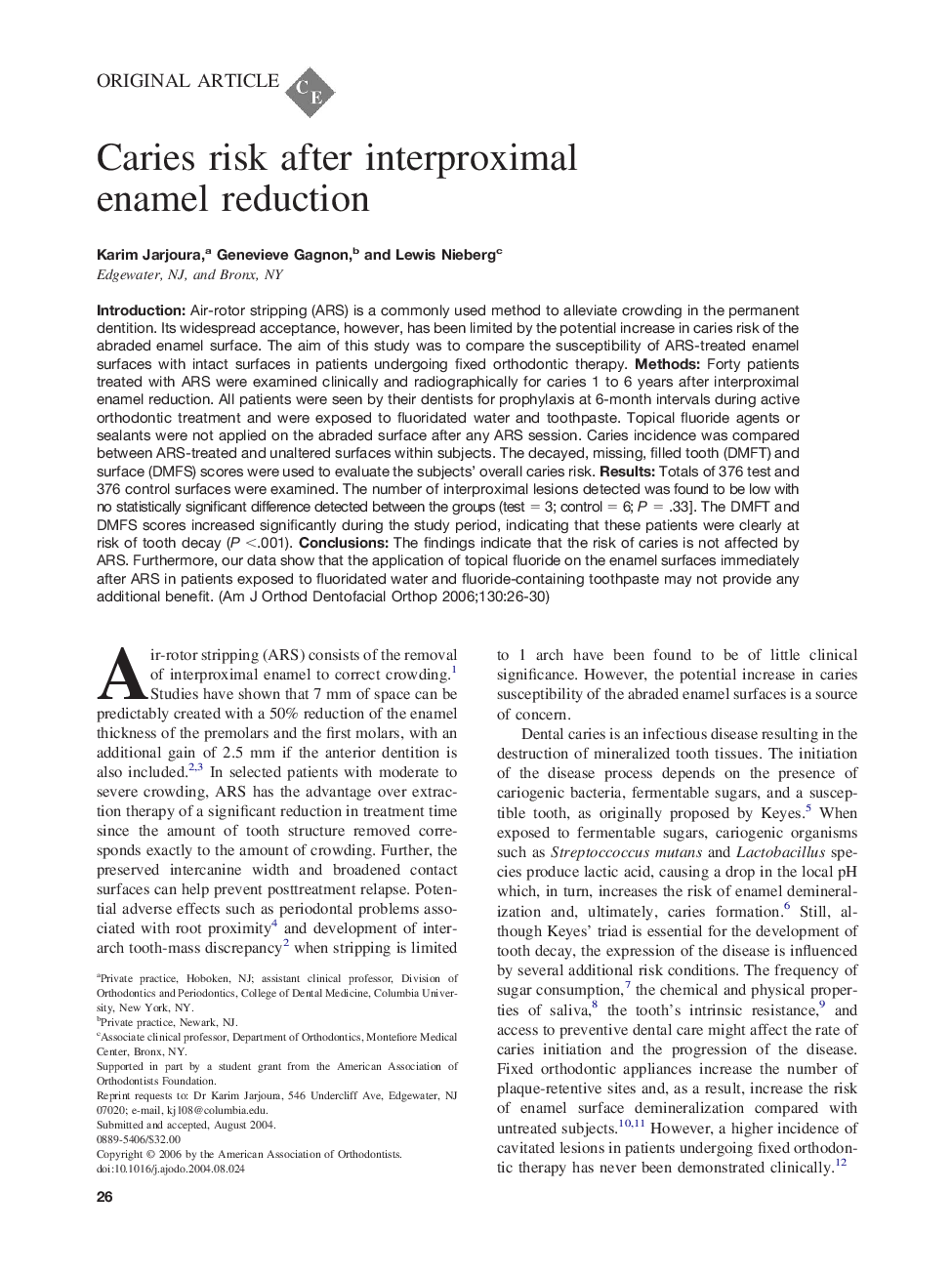| Article ID | Journal | Published Year | Pages | File Type |
|---|---|---|---|---|
| 3119001 | American Journal of Orthodontics and Dentofacial Orthopedics | 2006 | 5 Pages |
Introduction: Air-rotor stripping (ARS) is a commonly used method to alleviate crowding in the permanent dentition. Its widespread acceptance, however, has been limited by the potential increase in caries risk of the abraded enamel surface. The aim of this study was to compare the susceptibility of ARS-treated enamel surfaces with intact surfaces in patients undergoing fixed orthodontic therapy. Methods: Forty patients treated with ARS were examined clinically and radiographically for caries 1 to 6 years after interproximal enamel reduction. All patients were seen by their dentists for prophylaxis at 6-month intervals during active orthodontic treatment and were exposed to fluoridated water and toothpaste. Topical fluoride agents or sealants were not applied on the abraded surface after any ARS session. Caries incidence was compared between ARS-treated and unaltered surfaces within subjects. The decayed, missing, filled tooth (DMFT) and surface (DMFS) scores were used to evaluate the subjects’ overall caries risk. Results: Totals of 376 test and 376 control surfaces were examined. The number of interproximal lesions detected was found to be low with no statistically significant difference detected between the groups (test = 3; control = 6; P = .33]. The DMFT and DMFS scores increased significantly during the study period, indicating that these patients were clearly at risk of tooth decay (P <.001). Conclusions: The findings indicate that the risk of caries is not affected by ARS. Furthermore, our data show that the application of topical fluoride on the enamel surfaces immediately after ARS in patients exposed to fluoridated water and fluoride-containing toothpaste may not provide any additional benefit.
